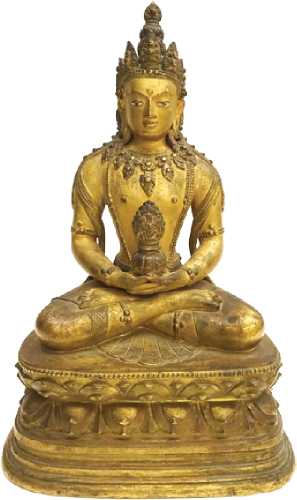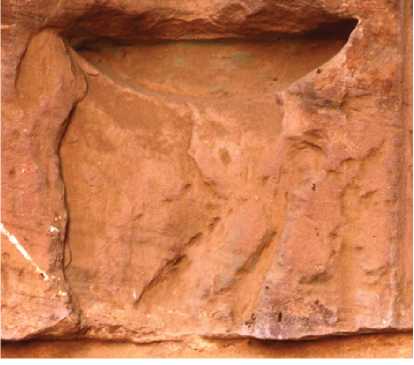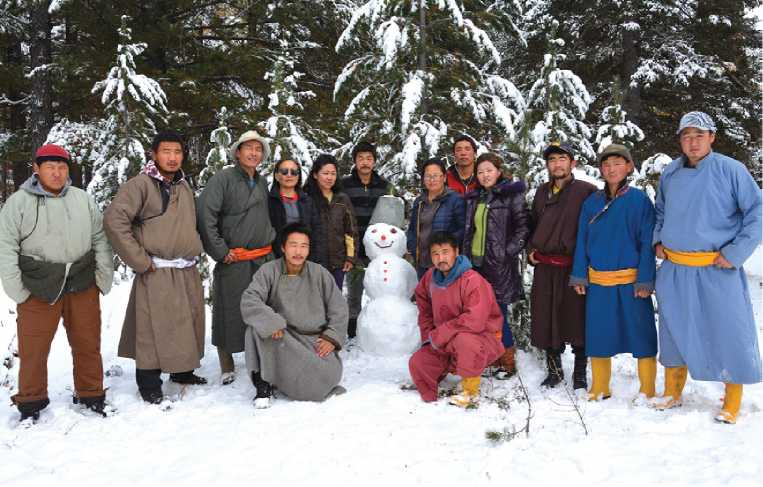HISTORY OF THE EAST. Universal history 
The article deals with the phenomenon of medieval Arabic manuscript book or a book written in Arabic script in non-Arabic language. Despite the large number of works where this phenomenon was analyzed, their authors did not provide a clear list of the criteria, which are specific to the Arabic manuscript book tradition in comparison to other medieval manuscript traditions of the West and East. Methodologically, the work is based on the principles of the “immanent analysis” of the phenomenon developed by the Russian and Soviet philological schools at the beginning of the last century in relation to the analysis of literary works. The authors of this article came to the conclusion that the structure-forming components of the phenomenon of the Arabic medieval manuscript book were as follows: 1) the Arabic script, as well as 2) the architectonics of the text of the Arabic manuscript book and 3) the specific features of the Arabic bibliographic description. The authors believe that these three components identified the Arabic (arabographic) handwritten book throughout its existence: from the 9th century AD to the present and from Eastern Europe to Indonesia. The results allow us to clearly understand what distinguished a book belonging to the Arabic manuscript tradition from manuscript books that were transcribed at the same time and in the same region, such as Coptic or Syriac.
This is the last article in the series of six articles, which altogether deal with the reconstruction of the history of the Ancient Israel. Its task is to offer the most plausible model of the emergence and the subsequent development as monarchic states of the kingdoms of Judaea and Israel. Methodologically, the research is based upon the narrative analysis. The key question is whether did exist the unified monarchy with Jerusalem as its capital during the rule of King David. To answer the question whether it did exist indeed and if yes then in what form one must compare the Biblical narratives with their author's ideology. The research shows that the actual “unified monarchy” was It appears that the unified monarchy was more likely “a project”, which in the actual narration was turned into the narrated past.
The publication provides a continuation of the translations of books of Shinchō-kō ki, previously published by the author. This is a commented translation into Russian of the book 7 of Shinchō-kō ki chronicle. The text comprises a description of one of the largest military clashes in the Sengoku period - the battle of Nagashino. The army of Oda Nobunaga and Tokugawa Ieyasu fought the army of Takeda Katsuyori. The victory of Nobunaga redressed the balance of power, which previously existed. The comments to the translation allow to compare the information from the Shinchō-kō ki chronicle to that preserved in other contemporary sources. They are also aimed to display the existing interpretations of the key passages.
HISTORY OF THE EAST. Ethnology, Anthropology and Ethnography 
The article examines the milestones of formation and development of the first public museum of Azerbaijan - the National Museum of the History of Azerbaijan. The author tracks the changing profile of the museum in the 20-30s of the last century within the context of changes of state policy and ideological priorities in Azerbaijan. The article also provides information on the role of the museum in the emergence and development of archaeological research in Azerbaijan, on the main achievements of the museum in the field of preserving and studying the historical and cultural heritage of the Azerbaijani people.
The article deals with the heritage of the outstanding master of Mongolian art Gombodorzhiin Dzanabadzar (1635-1723) and his disciples, who formed the so-called “school of Dzanabadzar”. The actual subject to analysis are most significant works of Mongolian Buddhist art preserved in the collections of the State Hermitage / St Petersburg. These comprise bronze sculptures and scrolls (tankas), as well as fragments of Buddhist clay sculptures and some other items, which originate from the Sardag monastery, the moulds for which were designed by Dzanabadzar. To describe the holdings, the author uses comparative analysis of the Buddhist iconography and stylistics. The sculptural works of the master as well as his disciples are so diverse that it is almost impossible to ascertain two completely identical items. The same is relevant for the phenomenon of the Dzanabadzar school plastics. Only the images of the clay tathagatas where were used the moulds are completely identical. The article offers a cornucopia of material for further discussions regarding the Mongolian art preserved in the collections of the State Hermitage.
HISTORY OF THE EAST. Historiography, source critical studies, historical research methods 
The article discusses the translation and interpretation of lines 51-52 from the Medinet Abu inscription, which dates to the 5th year of the reign of Pharaoh Ramses III. For the first time, this inscription drew the attention of the Soviet classicist Vadim Tsymbursky (1957-2009). In 1994 he suggested that lines 51-52 comprise a mention of the Trojan War. However, Tsymbursky did not read Ancient Egyptian and therefore he was not in a position to bring forward a sufficient argument to confirm his suggestion. Russian scholars in the recent years have produced a series of expert studies regarding the topic in question, which, however, have neither confirmed nor rejected the Tsymbursky hypothesis. In 2006, and subsequently in 2019, the author of the present article examined de visu the inscription in question and offered a new interpretation: “(51) Northern foreign lands trembled in their bodies, namely: peleset, teker [and tursha], (52) whose own land was ravaged. Their souls approached their end”. The author puts the Egyptian message into a clear historical context and justifies the possibility to compare the contents of these lines with the Greek epic tradition of the Trojan War.
PHILOSOPHY OF THE EAST. History of philosophy 
The article covers several aspects of Buddhist dialectics, as recorded in the last section of the “Abhidharma Compendium” (Abhidharma-samuccaya). It was compiled by Asanga (4th cent. AD) who was one of the founders of the Mahayana Buddhist school of Yogacara. Based on the Sanskrit text, the author gives a detailed account of Asanga's perception of the phenomenon of dialectics. He highlights the aspects as follows: the doctrine of reasoning methods, which provide the student with true knowledge, and the evidence of the reliability of this knowledge. The first part of dialectics comprises the essence of Buddhist teachings, which according to Asanga sees in the idea of three natures - the imagined, the dependent and the absolute (parikalpita, paratantra, pariniṣpanna) one. The second part covers the principles of rhetorics and the argumentation theory. Common principles lying in the basis of Buddhist rhetoric are determined by the bodhisattva ideal, or the ideal of an enlightened person who rises above the difference between samsara and nirvana, thus achieving the force to save other sentient beings from the ocean of saṃsāra. The author also points to the paradox that is immanent in Buddhist rhetoric: a preacher must show the emptiness of any conceptual construction by using the same constructions to enable the audience to get through them and to reach the non-conceptual reality. The article is an original study on the history of ancient and medieval Indian philosophy and rhetoric and will be of interest to everyone who deals with this problem.
PHILOSOPHY OF THE EAST. Philosophy of religion and religious studies 
The article is the second part of a study regarding the problem of the re-edition of Aristotle's Categories in the work “The Healing” (ash-Shifā’) by the greatest philosopher of classical Islam, Ibn Sina (Avicenna; d. 1037). It is based on the immanent study of the source. The study highlights Avicenna's revision of Aristotelian doctrine of the first three categories - the substance, the quantity and the relation. The authors highlight the intention of Ibn Sina to supply the Aristotelian teaching on categories with a more scientific (apodictic) form and to synthesize harmoniously rather different and not always consistent expositions of the ten categories as explained in the Categories and Metaphysics by Aristotle. Special attention is paid to the efforts Ibn Sina made to “ontologize” the Aristotelian categories, namely not only the proof of the existence of each of them, but also the establishment of its substantiality or accidentality.
HISTORY OF THE EAST. Philosophy of Religion and Religious Studies 
This article offers a detailed analysis of the religious and ideological foundations of the Safavid dynasty. It is based upon the modern predominantly Western European historiography. The methodological basis is the comparative analysis. Along with the works of British, French, German, Turkish, Russian and other scholars the author also uses medieval texts written in original (Oriental) languages. These are court chroniclers from the 16th-17th cent. by Fazl al-lah Ruzbikhan Khundji (Tarih-e alamara-ye Amini) and Iskender bek Turkman Munshi (Tarih-e alamara-ye Abbasi) and others. The Safavid dynasty was at the same time a dynasty of sheikhs and shahs. Therefore, the concepts of Sunnite teachings, Shi'ism and Sufism constitute an integral part of its culture and history. The article supplies a reader with the information necessary for establishing the religious views of each of the representatives of the Sufi House of Safaviye, starting from the founder of the Sufi Order and ending with his heirs, the rulers of the Safavid state. The author elaborates the topic regarding the original denomination of Islam the Safavids embraced - Sunni or Shi'a. Subsequently she deals with the exact period of the Safavid transition from one Islamic denomination to another. Special attention is also paid to some aspects of the development of Sufi traditions and ideology at various stages of the history of the Safavid dynasty.
LITERATURE OF THE EAST. Literature of the peoples of foreign countries 
This is the first translation into Russian of the “Martyrdom of John of Phanijoit”. The text is written in Coptic and originates from the beginning of the 13th cent. AD. The translation is preceded by an introduction, which comprises the history of the research as well as lists all the modern editions and translations of the “Martyrdom”. It is pointed out that there are some doubts about the original language of the text: some scholars argue that it could have been Arabic. There are also different speculations regarding the motives, which prompted the author to use Coptic, although at that time the Egyptian Christians almost completely switched to Arabic in everyday life. The composition of the “Martyrdom” follows the hagiographic canon, however, some expected topoi are missing. Among those are the torture of the Saint, the intervention of Heavenly Forces to strengthen the martyr. The main character in the “Martyrdom” is John, the flax seller. Having married a Muslim woman, he converted from Christianity to Islam. The narrative deals with what happened to John, when he decided to return to Christianity openly. The author of “Martyrdom” was a contemporary of the martyr and likely witnessed the events he described. Some of the characters mentioned in the “Martyrdom” are not fictitious but did exist indeed. All this makes the text a valuable source for the history of the Eastern Christianity in the Middle Ages.
Mir Taqi Mir is a classic Urdu poet of the 18th century, an outstanding master of ghazal genre. With his work, Mir Taqi Mir proved that his native Urdu language possessed a vocabulary fit to express the finest nuances of poetic speech. He also made evident that the ghazals written in Urdu were not entirely imitations of those written in Persian, which formed the poetical basis of Urdu poetry. The article argues that the Mir Taqi Mir's heritage can be considered as a milestone in the evolutionary development of both poetical and literary language of Urdu. Throughout his life, the poet remained in a creative search. Working on a certain poetical theme, he often made recourse to it trying to bring out maximum possibilities for its realization by means of his native language. Analysis of numerous examples in the article can be considered as an effort to ascertain how borrowed poetical traditions were domesticated and how this process facilitated the selection of vocabulary and standardization of common literary language of Urdu.
Language. Linguistic studies 
The present paper aims at demonstrating possibilities of the comparative and historical method in linguistics in reconstructing ethno-cultural prehistory of ancient peoples. Methodologically, it is based upon the analysis of 46 Ancient Egyptian-Arabic lexical parallels most of which are unattested in other Semitic and Afrasian languages, collected by the Hungarian specialist in Egyptian and Aftrasian languages G. Takacs and his predecessors. The author was the first to notice that some of 46 lexical parallels for semantic or phonetic reasons can hardly be considered to be randomly surviving cognates; neither can they be descarded as lookalikes. He suggests that they are direct lexical borrowings. This suggestion implies undiscovered contacts between Egypt and proto-Arabic speakers. According to the author's glottochronological dating, proto-Arabic separated from Central Semitic in early 3rd mill. BCE. These contacts started as early as the Old Kingdom and lasted through Middle to New Kingdoms. He concludes that the striking feature in this discovery is not only presumed Egyptian loans in Arabic but a small minority of very likely Arabisms in Egyptian language of all these periods. He argues that the most “robust” cases may testify to the Urheimat of proto-Arabic speakers located within reach of Egypt. The author is also inclined to identify the people of Midianites mentioned in both Hebrew and Arabic sources as Proto-Arabic speakers. However, as his competence is limited to comparative Afrasian linguistics and Semitic etymology, he leaves this arguable question to discuss archaeologists and historians.
CHRONICLE. Conference report 
The article provides an account of the Author's participation in the 16th Sharjah conference on contemporary Arabic literature (Amman / Jordan, September 2019). It comprises information about the institutions and people who organized this meeting, as well as an outline of the academic problems regarded as its main topic: the specific features of Arabic novel delivered in the electronic form. The author, Professor D. Mikulsky also offers a brief report on his personal conversations with Arab writers and scholars of literature, as well as with people of Amman whom he met during his stay in the Capital of Jordan. These conversations were chiefly about these people's attitude towards Russia and its culture, and also about the academic and popular perception of the classical Arabic literary and cultural legacy of the Arabs and family and clannish roots of the Author's informants. The article, written in an elegant style offers a vivid picture of the present-day sociocultural situation in the Arab world, where the most recent cultural phenomena are amalgamated with traditional institutions.
CHRONICLE. Reviews 
ISSN 2687-0738 (Online)


























